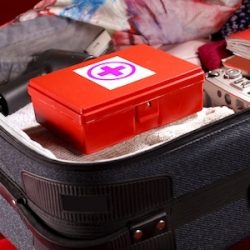SingaporeMotherhood | Baby & Toddler
January 2014
Managing Myopia in Kids

The bad news: myopia is hereditary. “Genetics has a definite role,” said Dr Gerard Nah, an eye surgeon with W Eye Clinic and the founder of the Vision Performance Centre for the Singapore Armed Forces.
Ethnically, he added, East Asian races have a higher tendency towards developing myopia. So if you’ve been going around as a four-eyed wonder since your well, wonder years, it’s highly probable that your children will be doing the same.
What has eye doctors in singapore concerned though, is that myopia is increasing across all social levels. “Even with those with lower educational qualifications the incidence of myopia has risen compared to the mid-1990s. This is definitely a cause for concern as it means that more Singaporeans will need vision correction of some kind,” Dr Nah said.
[banner][/banner]
Myopia in Singapore’s children
While there is no year-on-year population data, doctors say that myopia in general has gone up. Even for those with lower educational qualifications, the incidence of myopia has risen compared to the mid-1990s.
This means that more Singaporeans will need vision correction of some kind in the future. On top of that, the number of people at risk for developing eye disease related to high myopia also increases, for example myopic macular degeneration, retinal detachment and glaucoma.
The good news is, myopia can be managed. Play more, and kids may see better, say vision experts, as outdoor activities have been proven to have a protective effect over myopia.
But if myopia has already set in, there are ways to manage it using treatments such as atropine eye drops and Ortho-K lenses. Dr Nah and Mr Chew, a veteran in eyecare with keen interest in the area of myopia control from W Optics, shared some tips on myopia management for children with us.
In a nutshell, think lifestyle changes, the right frame fit, sun care for the eyes, and myopia management treatments.
5 diet lifestyle changes for kids to stop the progression of myopia
- Spend less time indoors and on books and handheld devices such as handphones or laptops. These activities are one of the main causes for myopia progression.
- Include more daytime outdoor activities. This has been shown to have a protective effect over myopia.
- When studying or reading, ensure that the room is brightly lit, such that the eye does not have to exert additional effort to accommodate the reading. Also, use white light instead of warm yellow lights for reading as white light mimics the sun’s spectrum for natural light better.
- Do not read while lying down or in a moving vehicle.
- Eat a healthy diet that is rich in vegetables and fish oils.
Choosing the right frames for infants & young children
Look out for:
- The fit of the spectacles around the nose bridge. It can be checked by sliding the spectacles down the nose. If it can slide down without much resistance, the nose bridge is too big or wide for the child.
- The length of the temple cannot be too long; otherwise the spectacles cannot be firmly secured on the child’s face.
- The material of the spectacles. Children can sweat a lot, and perspiration can cause corrosion, so pick one that has an acetate or plastic temple. You can also opt for hypoallergenic materials. For infants, the frames should also contain no screws or small parts that can be detached. One such brand would be Swissflex, which offers infant, children and adult ranges.
Enforcing good suncare habits in children
- Studies have shown that children’s eyes allow about 70 per cent more UV light to reach their retina as compared to adults, so suncare is extremely important for them.
- Children should wear a good pair of sunglasses and use a broad-rimmed hat to protect not only the skin but also the eyes. UV protection for the eyes can help to reduce the progression of several eye diseases such as cataracts, pterygium and age-related macular degeneration.
- While these diseases may be more common in the elderly, it is a good idea to start these suncare habits from young. Getting fun-looking sunglasses and cool-looking hats may help encourage this habit in kids.
- Many sunglasses are now commonly made of shatterproof plastic or polycarbonate lenses which protect the eyes from injury, thus getting the right pair of sunglasses will be protective, and not hazardous.
Atropine eye drops & Ortho-K lenses
Atropine eye drops have an efficacy of 50 to 60 per cent in retarding the progression of myopia. That means if someone would normally progress by 100 degrees per year, atropine eye drops would reduce this to progression to 40 to 50 degrees.
For Ortho-K lenses, there is up to 50% reduction in myopia increase. This means that if someone would normally progress by 100 degrees each year, wearing Ortho-K lenses can help to reduce this progression to up to 50 degrees. One advantage that Ortho-K lenses have over atropine eye drops is its ability to correct higher levels of astigmatism “very well”, said Mr Chew.
The use of atropine eye drops were not popular or mainstream in the past because of the side effects, which required children to wear sunglasses and put on spectacles with progressive lenses for reading, shared Dr Nah.
However, a recent local study which used a very low concentration of atropine, showed that myopia progression can be controlled effectively with virtually no side effects. “This suggests that the use of atropine eye drops will start to become more mainstream in the future,” he said.
All content from this article, including images, cannot be reproduced without credits or written permission from SingaporeMotherhood.
Follow us on Facebook, Instagram, and Telegram for the latest article and promotion updates.






